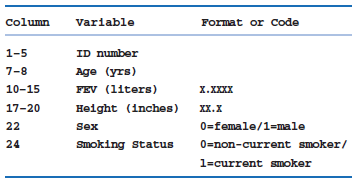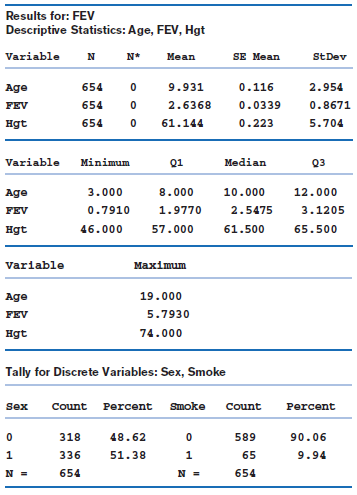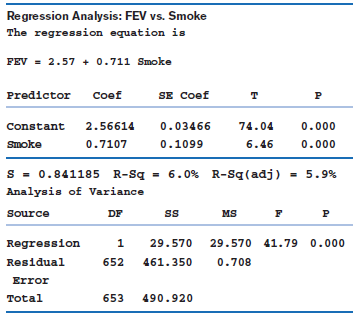The regression coefficient for smoking is 0.7 ± 0.1, p < .001. Does this mean that smokers
Question:
Table 11.31: FEV.DOC

Some descriptive statistics of the variables in the data set using Minitab are given in Table 11.32.
Table 11.32: Descriptive statistics for FEV.DAT

We first ran a regression of FEV on smoking as shown in Table 11.13.
Table 11.33: Regression of FEV on smoking in FEV.DAT

Fantastic news! We've Found the answer you've been seeking!
Step by Step Answer:
Related Book For 

Question Posted:





